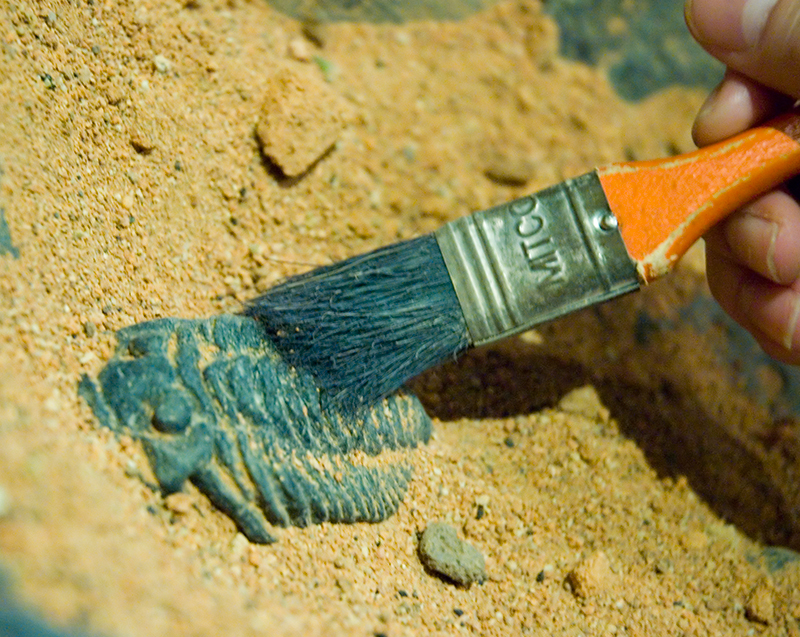Ordovician << `awr` duh VIHSH uhn >> Period was a time in Earth‘s history that began about 485 million years ago and ended about 444 million years ago. The period takes its name from the Ordovices, an ancient Celtic tribe that inhabited an area of Wales where rocks of this age are found. Ordovician rocks occur around the world. Examples found near Cincinnati, Ohio, are noted for abundant, well-preserved fossils.
During the Ordovician Period, life flourished in Earth’s oceans. Some Ordovician animals were the ancestors of common modern groups, such as clams and snails. Most of them, however, belonged to groups that are now extinct or rare. Long-extinct animals that thrived during the Ordovician Period include trilobites and graptolites. Brachiopods (lamp shells) and crinoids (sea lilies) were plentiful. Primitive jawless fish swam in the oceans. Orthocone nautiloids appear to have been the main predators. These sea creatures had narrow, cone-shaped shells and squidlike tentacles on their heads.

During the Ordovician Period, much of the world’s land lay in the Southern Hemisphere. The land mass now known as North America lay near the equator. What is today northern Africa sat over the South Pole, with glaciers covering what is now the hot, dry Sahara.
Many creatures died off at the end of the Ordovician Period in the earliest major extinction event in Earth’s history. Rapid glacier formation probably caused the extinction. The spreading ice cooled the oceans and trapped much water, lowering sea levels.
